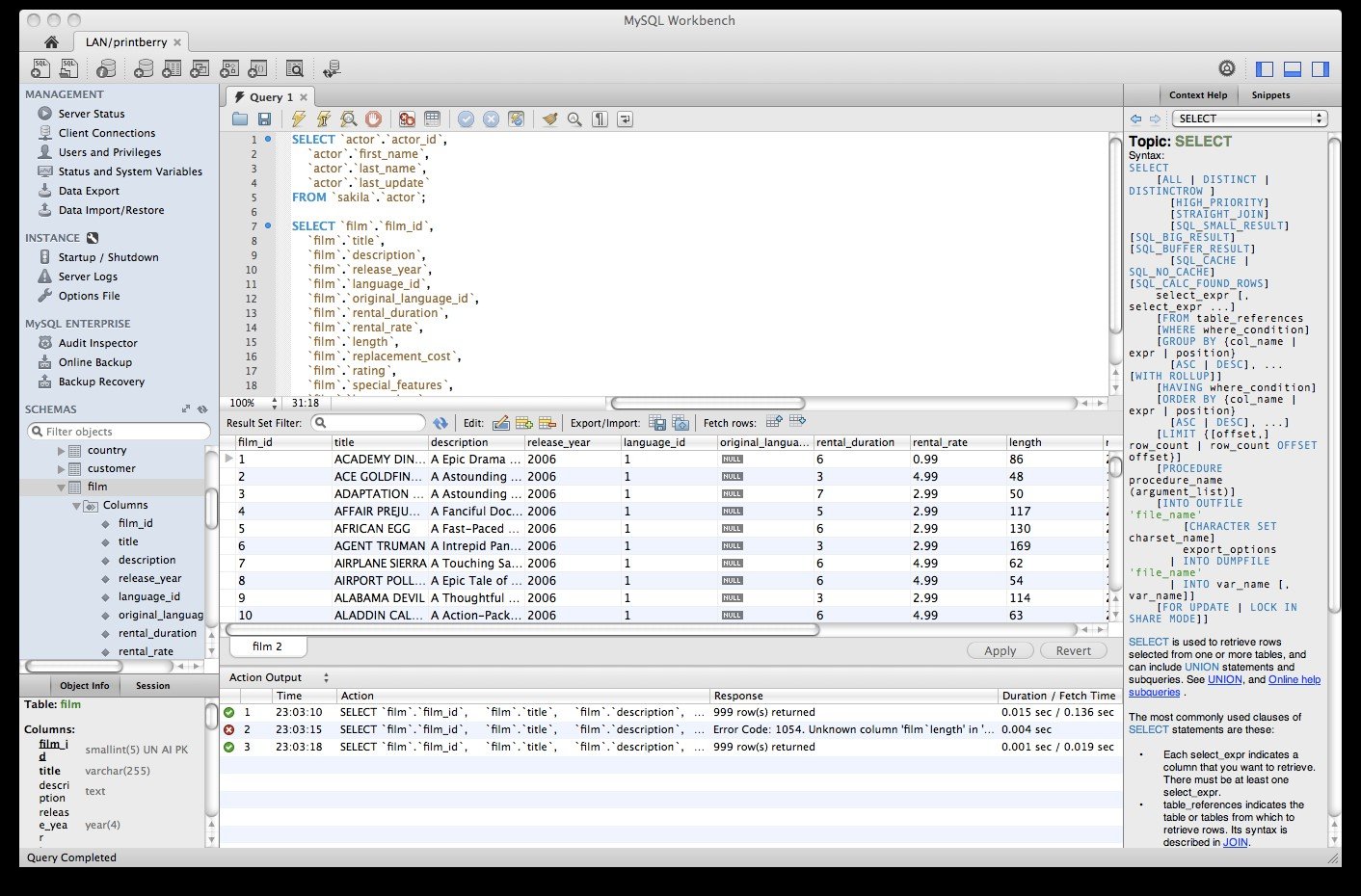
- #Image in mysql database workbench how to#
- #Image in mysql database workbench pdf#
- #Image in mysql database workbench pro#
- #Image in mysql database workbench software#
The form editor is just as easy to use you only need to remember to click the Next Entry button (single right-pointing arrow) to move to the next data row ( Figure F), before entering new data.Ĭongratulations, you successfully created a database, added a table, and entered data into the table. Once you add all of your data, click Apply to execute the SQL Script.
#Image in mysql database workbench how to#
Double-click under that newly created row and create another. In this tutorial, you will learn What MySQL Workbench is, Modeling and Design tool, SQL Development & Administration tool, and How to Install MySQL workbench. After entering the necessary data, hit Enter on your keyboard. Double-click the first entry in one of your columns and type the data to be added. For the fastest route to success, use the result grid (which is the default). In this window, you can either use the result grid or open the form editor. You will then find yourself in a window that allows you to enter data ( Figure E). In order to start adding data to a table, right-click the table (in the SCHEMAS pane) to be modified and click Select Rows. In previous incarnations of MySQL Workbench, a button could be found on the home screen that took you directly to the table data entry section. It’s now time to populate that table with some data. Once you do that, you can then select the Datatype for the column ( Figure D).Ĭontinue adding columns until your table is complete. In the new window ( Figure C), name the table.ĭouble-click under Column Name, and you should be able to type the name of the first column.

Expand that listing, right-click the Tables entry, and select Create Table.

I’ve created a database called SERVERS, that will be listed in the SCHEMAS pane. Once the schema is created, close the SQL Script window. Once you name your schema, click the Apply button and, when prompted, review the SQL Script and click Apply again. In the resulting window ( Figure B), give the schema (database) a name and (if necessary) select a Default Collation. From the database home screen ( Figure A), right-click a blank spot under the SCHEMAS pane and select Create Schema. Open MySQL Workbench and connect to your database server. The first thing to do is create a database (aka Schema). I will assume you already have MySQL Workbench installed. You need to make sure you have MySQL set up for remote connections ( See: How to set up MySQL for remote access on Ubuntu Server 16.04 (This also works for Ubuntu 18.04). My instance of MySQL Workbench will connect to a MySQL database, housed on Ubuntu Server 18.04. I’ll use MySQL Working 6.3, which has drastically evolved from older versions of the tool.
#Image in mysql database workbench pro#
SEE: Server deployment/migration checklist (Tech Pro Research) What you need To do so, I’ll walk you through the process of creating a database, adding a table to that database, and then adding data to the table. I’m going to show you just how easy it is to make use of MySQL Workbench.

Networking: Must-read coverageĥ programming languages network architects should learn (free PDF)īehind the scenes: A day in the life of a database administratorĢ0 steps to decommission a redundant data center facilityġ7 Terminal commands every user should know It’s cross-platform, open source, and incredibly easy to use. This particular tool is one of the finest locally installed MySQL client tools you’ll find. Fortunately, for those users, there are plenty of GUIs available to make the task easier. To others, however, the command line is too cumbersome to be efficient. To them, it’s as efficient as a work environment can be.
#Image in mysql database workbench software#
This software will help you to design, optimize, document and create any MySQL database, so download MySQL Workbench right now.Many database administrators are comfortable working within the command line.
#Image in mysql database workbench pdf#
Furthermore, it's possible to save the designs in MWB, XML, PNG, SVG, PS and PDF format to be able to check them whenever we want. One of the most interesting functions of MySQL Workbench is the possibility for it to automatically generate an SQL CREATE or ALTER script, making it much easier to carry out management tasks. The software's interface has been developed to be as simple as possible, allowing you to drag & drop any element as well as editing it. Something that will make many things clearer and easier to understand. A database is one of the most important elements that has to be created when it comes to starting a project, and since MySQL is one of the most popular database systems in web environments, the truth is that MySQL Workbench is an incredibly useful tool to design and model any database.Ĭreated by the same development team that developed the most popular GPL database, MySQL Workbench is of great help when it comes to designing databases, their relations and viewing their physical structure.


 0 kommentar(er)
0 kommentar(er)
